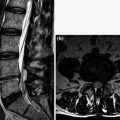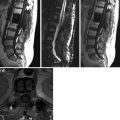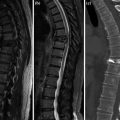Tommaso Scarabino and Saverio Pollice (eds.)Imaging Spine After Treatment2014A Case-based Atlas10.1007/978-88-470-5391-5_3
© Springer-Verlag Italia 2014
3. Surgery
(1)
Department of Neurosurgery, “Lorenzo Bonomo” Hospital, Andria, Italy
(2)
Department of Radiology—Neuroradiology, “Lorenzo Bonomo” Hospital, Andria, Italy
Abstract
Surgery of spinal pathology should include: high cure rates, possibility of simply intervening on patients already treated, low recurrence rate, absence of contraindications, minimal side effects, no complications in the short, medium and long term, no acute or chronic toxicity, absence of requiring long hospitalization, short convalescence, maximum conservativity of spinal biomechanics in treated district, reduction of the need of post-operative use of orthopedic devices (busts, corsets etc.), low cost.
Surgery of spinal pathology should include: high cure rates, possibility of simply intervening on patients already treated, low recurrence rate, absence of contraindications, minimal side effects, no complications in the short, medium and long term, no acute or chronic toxicity, absence of requiring long hospitalization, short convalescence, maximum conservativity of spinal biomechanics in treated district, reduction of the need of post-operative use of orthopedic devices (busts, corsets etc.), low cost.
Spinal surgery, as happens for the other districts, may present complications, for a large part neurological (3–6 % incidence), which can be classified according to the mechanism and the time in which they occur [1, 2]. Causes of injury are generally direct or indirect. Direct injuries (tear, compression, traction and avulsion of the neural elements) are most commonly the result of a technical failure of the surgeon. Indirect injury are due to the alteration of the blood supply to the spinal cord and nerve roots, or to the gradual compression of the neural elements, for example in the correction of a deformity or for a postoperative hematoma. This kind of lesion is usually the result of ischemia or disruption of the vascular flow.
According to the time they occur, complications are classified into intra-operative, early postoperative (1–14 days), postoperative or later (after 14 days), whose gravity is related with complexity of surgery. Intraoperative events are usually related to complications deriving from anesthesia, position of the patient, technique specific risks. Possible early complication of spinal surgery is thromboembolism whose risks can be reduced but not absolutely removed with anticoagulant prophylaxis. Risk of mortality from pulmonary embolism at 30 days after surgery varies between 0.5 and 1.5 per 1,000 patients. In early postoperative, and up to 2 weeks after, neurological lesions are most commonly secondary to direct compression of neural elements. This is often caused by compression of a possible hematoma, epidural abscess or pseudomeningocele.
Surgery should be done only in case of real need and with minimum trauma and invasiveness. The two most common surgical approach in lumbar spine surgery are: decompression for the treatment of hernia and fusion for the degenerative pathology.
Decompression surgery involves removing a small portion of the bone over the nerve root and then of disk material to relieve pinching of the nerve (microdiskectomy or laminectomy). Lumbar spinal fusion involves using bone graft to stop the motion at a painful vertebral segment in order to decrease suffering. Several medical devices with different techniques are available in spinal fusion surgery [3, 4].
3.1 Surgery Techniques in Discal Hernia
Intervertebral disk sinergically works with interapophyseal joints forming thus a functional unit. It has moreover, a close relationship with neural adjacent structures and it is strongly stimulated by pressure and torsion forces of head and trunk. Its functionality therefore is important in determining quality of life.
Spinal surgery should be effective and respectful of original structure, easy execution and low cost. Furthermore it should be justified by consistent correlation between reported symptoms (areas of pain irradiation, paresthesia, functional limitation), examination (clinical trials and reflections) and imaging (CT, MRI) [5, 6], duration of symptoms more than six weeks, pain unresponsive to analgesic, failure of conservative treatments.
Traditional techniques are microdiskectomy (or small open surgery) and diskectomy (open decompression), both carried out in order to solve the compression and delete the material that triggers the inflammatory process responsible for the pain. The choice depends from several reasons (for example in the presence of root canal stenosis diskectomy is preferred) and the duration of the sciatic pain [7–11]. In cauda equine syndrome surgery should be carried out urgently.
3.1.1 Microdiskectomy and Standard Discectomy
Microdiskectomy consists in full or partial removal of the nucleus pulposus, with the aid of the surgical microscope that zoom neural structures (dural sack and nerve root). Approximately 90–95 % of patients will experience relief from sciatic pain after this surgery. Standard diskectomy instead involves open air full or partial removal of the herniated nucleus pulposus which is causing compression on the neural elements. When sciatic pain is due to lumbar spinal stenosis, surgery involves removal of disc and part of the bone which is pinching nerve root. Decompressive surgery is performed by laminotomy (bone resection limited to small segments of inferior margin of the cephalic lamina and the superior margin of the caudal lamina), laminectomy (bone resection of the entire width of lamina), laminectomy and facetectomy (bone resection of part or full facet joint in addition to cephalic and caudal laminae).
Access to the spine occurs through maximum 3 cm incision focused on the vertebral body, with dissection of the muscle and small opening in the ligamentum flavum, sometimes with minimal removal of part of the upper sheet (emi-laminectomy).
After lumbar laminectomy approximately 70–80 % of patients typically experience relief from sciatic nerve pain.
Surgical complications, such as wound infections and nerve roots damage, are more frequent than in microdiskectomy. These minimally invasive techniques allow to mobilize the patient in the first day and generally dismiss in the second. However, may occur instability and spinal pain in a short time. With the lack of disk and then its damping function, the disk above and below will work harder with resulting risk of other hernias, especially in patients performing heavy physical activity or overweight.
Another consequence is the appearance of scoliosis (lateral inclination of the spine from the operated side where disk thickness is insufficient) with consequent pain syndrome (called “kissing spine”), early facets arthrosis, narrowing of the canal, possible nerve entrapment and then further return of pain. Friction of the vertebral bodies adjacent to the treated disk involves formation of osteophytes causing low back pain [12]. Moreover, there may be a recurrence or a fibrous scar, that if hypertrophic can compress and irritate the affected nerve and require a second operation (the risk of reoperation is around 3–15 %). Most of the surgeons therefore have almost left this type of intervention for the high risk of complaints for “malpractice” and statistical studies showing that after four year there is a return back to preoperative clinical conditions.
3.2 Surgery in Degenerative Disorders
It is used when conservative management has failed, in spondylolisthesis, scoliosis or deformity, post-discectomy syndromes, segmental instability adjacent to a previous fusion site, unstable spine caused by infections, tumors or fractures. It can be performed with traditional stabilization (known as fusion surgery) or with more recent “dynamic stabilization” (non-fusion surgery) [3, 4].
Once stabilization consisted in weld the two adjacent vertebrae with each other to abolish any abnormal motion (traditional stabilization by fusion) thanks to access to posterior surface of the vertebrae with gouges, scalpels and rongeurs, to activate a mechanism aiming to callus formation. Over the years, with the development of materials and surgical techniques, posterior arthrodesis was replaced by the posterolateral (including the articular apophyses and transverse processes), then by the distraction and internal stabilization associated with arthrodesis; in the 70s finally, there was the emergence of stabilization with transpedicular screws. Some limits like deterioration of the instrumented arthrodesis in the years following the operation and degenerative effects above and below arthrodesis obtained with rigid stabilization, have recently developed a new surgical concept which aims to abolish abnormal motions between the bodies maintaining normal mobility of the joints (called “dynamic” or “elastic” stabilization) using less rigid instrumentations and materials with bone-like elasticity in order to preserve, at least partly, spinal micro movements.
Dynamic stabilization, by use of special devices, allows to prevent the degenerative cascade preserving the physiological rigidity and stability of the functional unit and therefore maintain natural mobility before degenerative effects become irreversible. Recently emerged the need to use a hybrid technique, with new instrumentations able to respond in a modular way, according to the pathology and the choice of the surgeon, in order to abolish or preserve the motions of each functional spinal unit.
3.2.1 Fusion Surgery
Fusion surgery consists of fusion of two or more adjacent bodies and removal of the intervertebral disk in order to stop the motion at painful vertebral segment (whit decreasing of pain generated from the joint), to stabilize the spine, to replace resected components, to maintain anatomic alignment and to prevent pseudarthrosis.
Spinal fusion involves the insertion of a bone graft (to stimulate bone growth) or bone graft substitute (natural or synthetic material to replace bone tissue and stimulate growth) between two vertebral elements with or without any material in the space left by disk removal. Bone fusion occurs within 4–5 months after surgery. Bone graft does not determine fusion at the time of the surgery, but allow growing of new bone to interfuse a section of the spine together (into one long bone). For few moths after surgery some devices are typically used to provide stability for that section; over the long term the solid fusion occurred, provides itself to stability [13]. Devices commonly used are rods and plates, translaminar or facet screws, transpedicular screws, interbody spacers [14]. The choice of these devices depends on clinical problem, anatomic location and surgeon preference [3, 4, 15].
Lumbar Spine Fusion
Traditionally there are different ways to fuse lumbar spine. Anterior and posterior fusion procedures are frequently complicated by persistent or recurrent low back pain that is probably multifactorial and caused by surgical approach, pseudoarthrosis and development of adjacent-level disease. Traditional surgery can also result in complications like vascular and bowel injury, sympathetic dysfunction and can improve long-term clinical outcomes. Advanced alternative minimally invasive approaches have been developed to avoid these complications [3, 4]. The recent innovative biologic osteoinductive materials like BMP (bone morphogenic protein) are able to reduce adjacent-level disease. Motion-preserving devices moreover, can be causes of complications [3, 4].
Lumbar spinal fusion surgery is more effective when involving only one vertebral segment, not determining mostly any limitation in motion. Multi-level fusion surgery may be considered necessary in cases of scoliosis, kyphosis, spondylolisthesis and lumbar deformity, fractures, tumors, infections, rarely in treatment of only pain. Lumbar fusion spine therefore has a small success rate in multi-level treatment.
Advances Lumbar Spinal Fusion
Advances minimally invasive fusion include laparoscopic anterior lumbar interbody fusion (ALIF), posterior lumbar interbody fusion (PLIF), transforaminal lumbar interbody fusion (TLIF), posterolateral gutter fusion, direct lateral interbody (or fusion across the disk space) fusion, extreme lateral interbody fusion (XLIF) and trans-sacral fusion (axial lumbar interbody fusion, AxialLIF) [3, 4]. Purpose of all interbody fusion devices is to remove degenerate disk material, restore and maintain disk space height and normal sagittal contours (lordosis), and increase stability of treated segment. Each technique can stand alone or can be associated with supplemental segmental instrumentation.
Anterior Lumbar Interbody Fusion
ALIF is performed by using an anterior approach when pain is predominantly diskogenic and posterior decompression is not required. This approach is performed by using a lower abdominal incision or retroperitoneal approach through the flank. An anterior approach provides for a much more comprehensive evacuation of the disk space and this leads to increase surface area available for a fusion. A larger spinal implant can be inserted with following superior stabilization. These are supplemented by screws and rods or plates, which may be placed either anteriorly or posteriorly (depending on access) because of the need to provide more rigid fixation than an anterior approach alone. In cases where there is not high instability, an ALIF alone can be sufficient especially in cases of one level degenerative disk disease and where disk space collapse is not excessive.
Posterior Lumbar Interbody Fusion
PLIF is performed by using a posterior surgical approach (bilateral partial laminectomies, caudal and cephalic) followed by diskectomy. Bone graft material is packed into the anterior disk space before the insertion of an interbody spacer or two interbody spacers placed side by side and packed with graft material. Further bone graft material is then packed into the remainder of the disk space. Posterior instrumentation is performed to provide a rigid support until bone fusion occurs.
Posterior surgery has a higher potential for a solid fusion rates than posterolateral because the bone is inserted into the anterior portion of the spine. Bone in the anterior portion fuses better because there is more surface area than in the posterolateral gutter, and also because the bone is under compression. Conversely not as much of the disk space can be removed with a posterior approach. Moreover, there is a small risk that inserting a cage posteriorly will allow it to retro pulse back into the canal and create neural compression.
Transforaminal Lumbar Interbody Fusion
TLIF is similar to the posterior one but is performed by using a more lateral approach that leaves the midline bone structures intact, minimizes central spinal canal disruption, and reduces dural tube traction and exposure.
A total facetectomy is generally performed to gain access to the lateral disk space. Transforaminal interbody spacers are crescent shaped and are placed anteriorly in the disk space. TLIF procedure has several theoretical advantages over some other forms of lumbar fusion. First of all bone fusion is enhanced because bone graft is placed both along the gutters of the spine posteriorly but also in the disk space. Furthermore a spacer is inserted into the disc space helping to restore normal height and opening up nerve foramina to take pressure off the nerve roots. Finally a TLIF procedure allows the surgeon to insert bone graft and spacer into the disk space from a unilateral approach without having to retract nerve roots, whit reduction of injury and scarring around roots respect to PLIF.
< div class='tao-gold-member'>
Only gold members can continue reading. Log In or Register to continue
Stay updated, free articles. Join our Telegram channel

Full access? Get Clinical Tree








